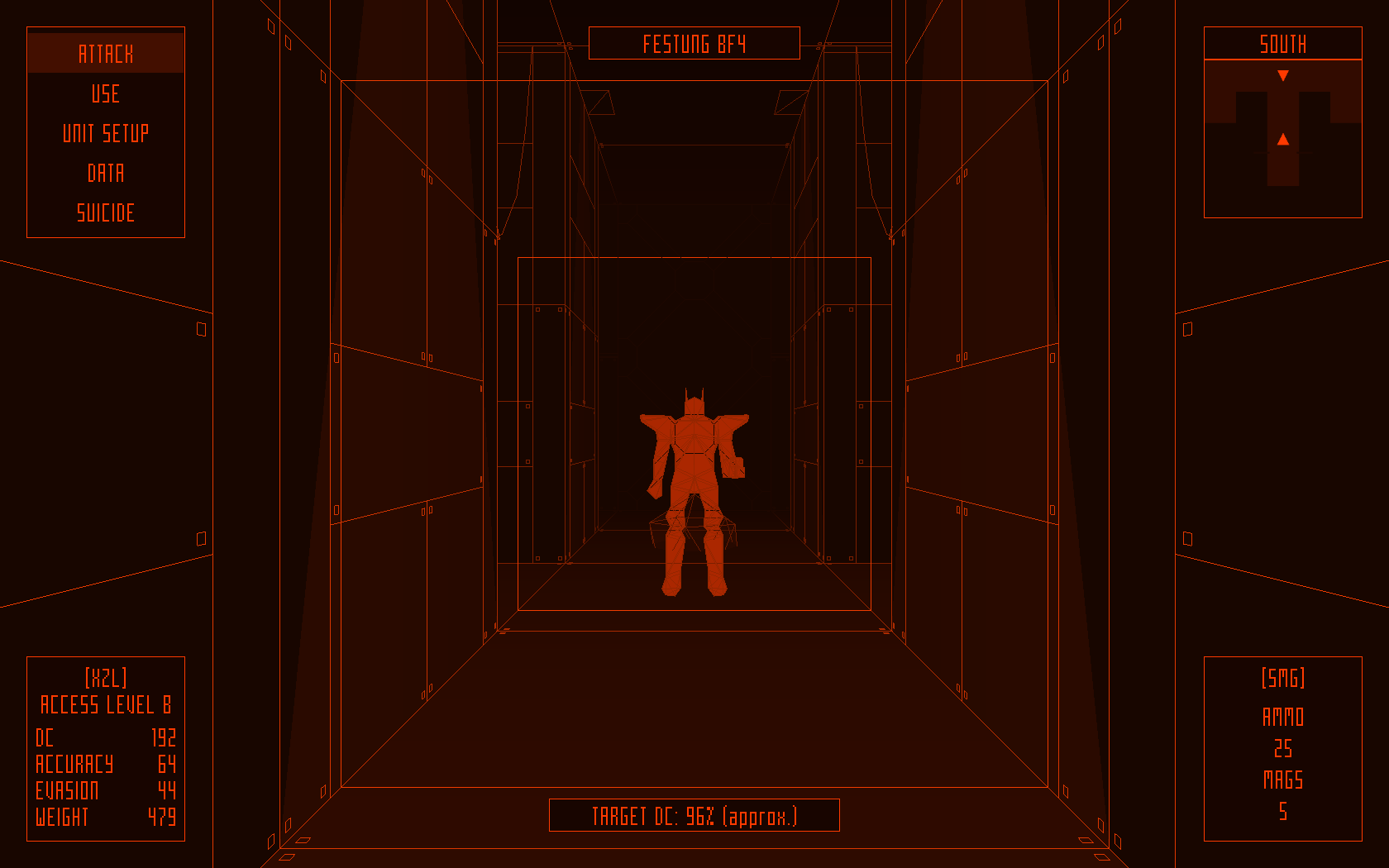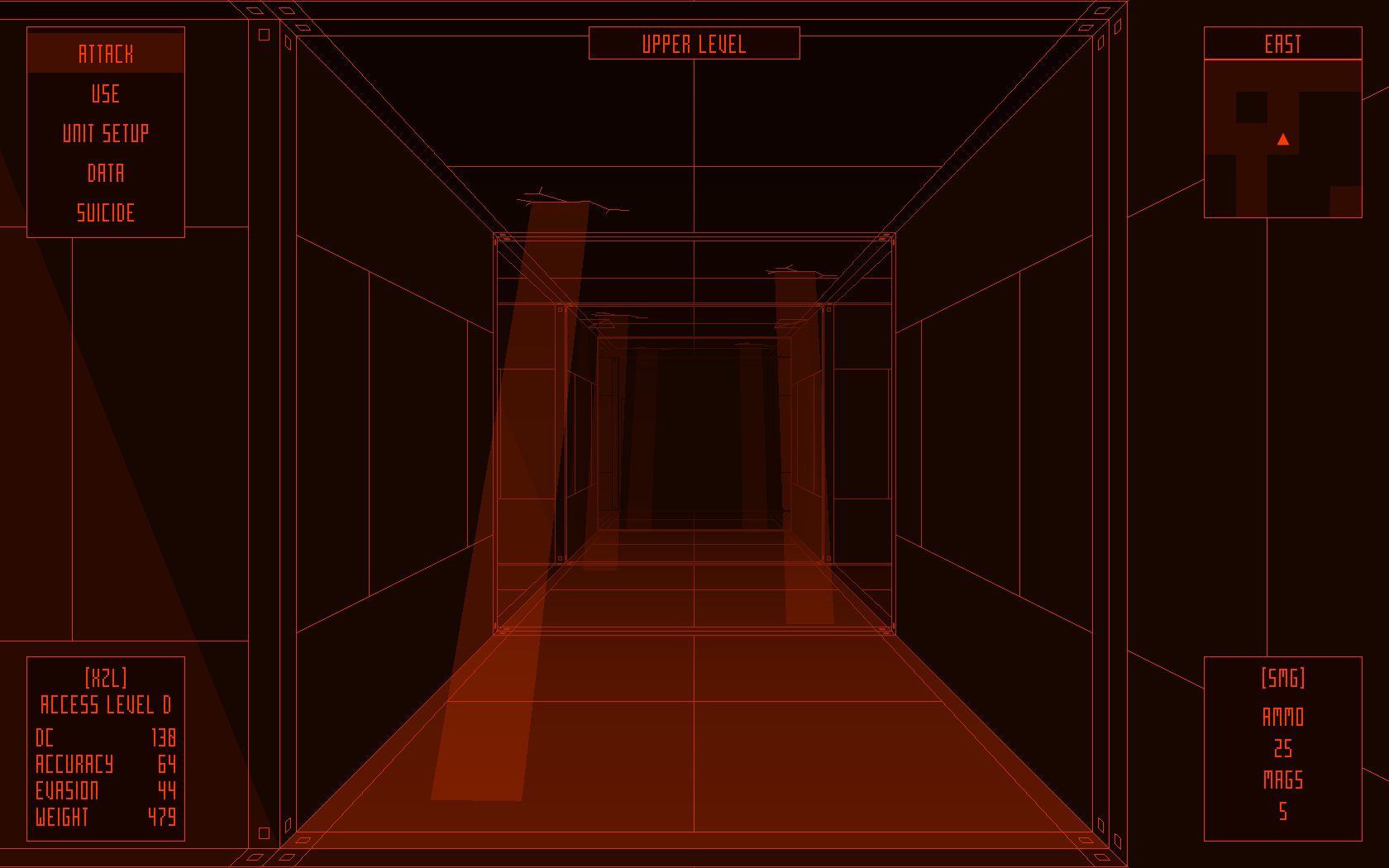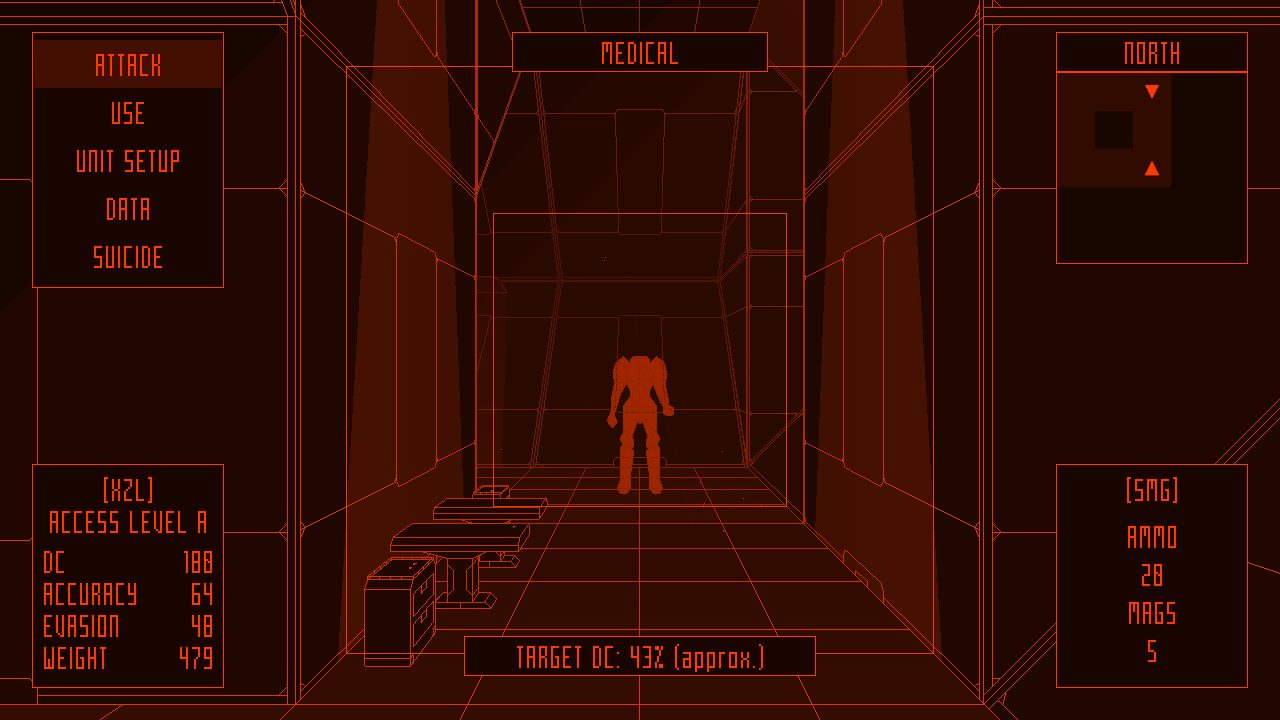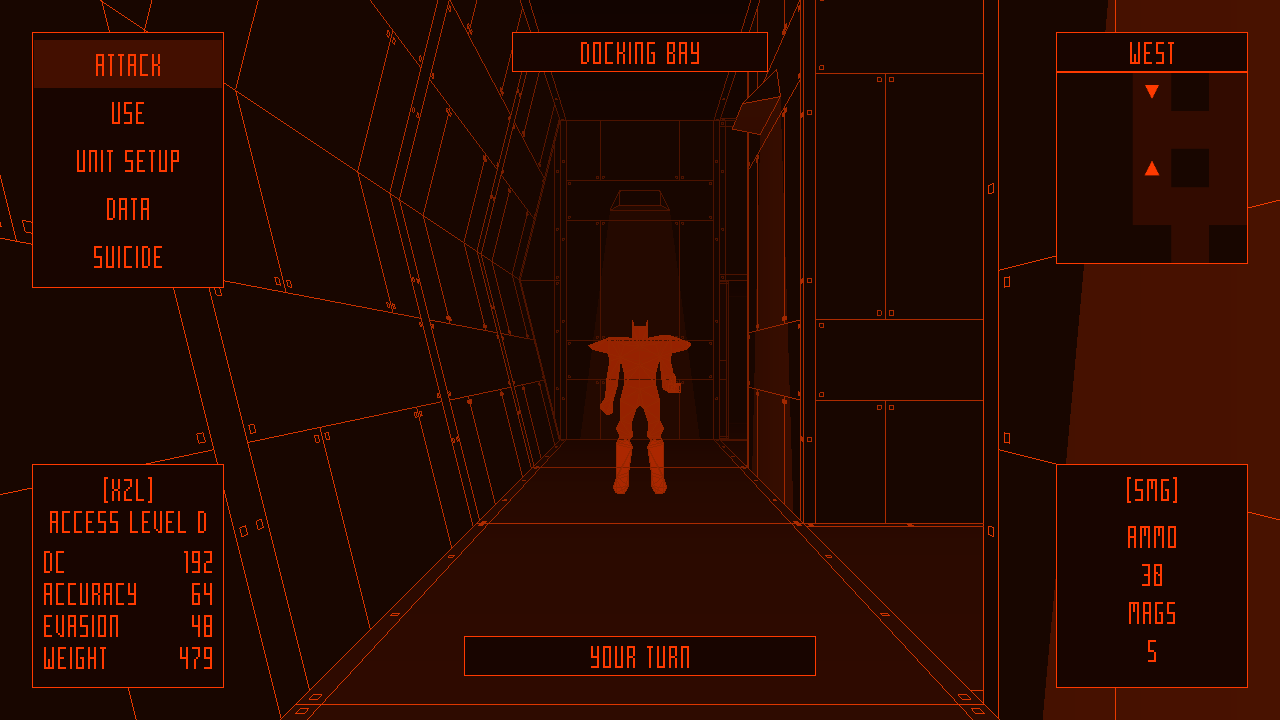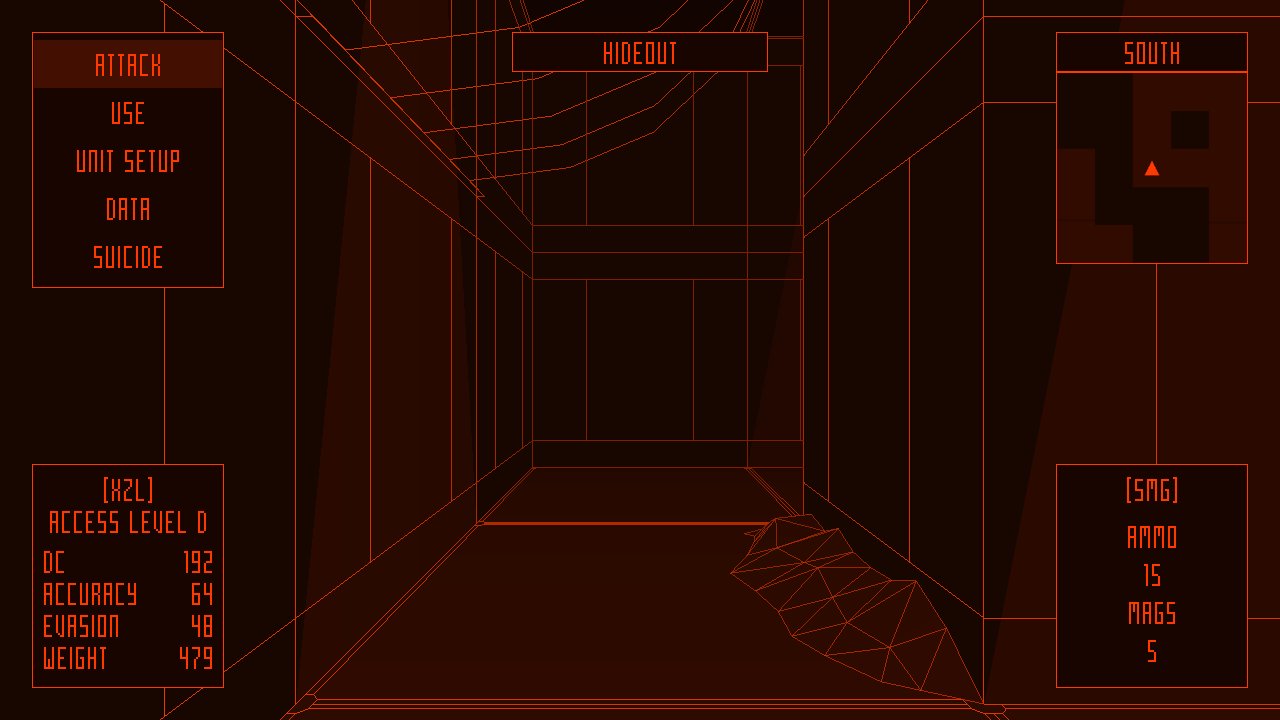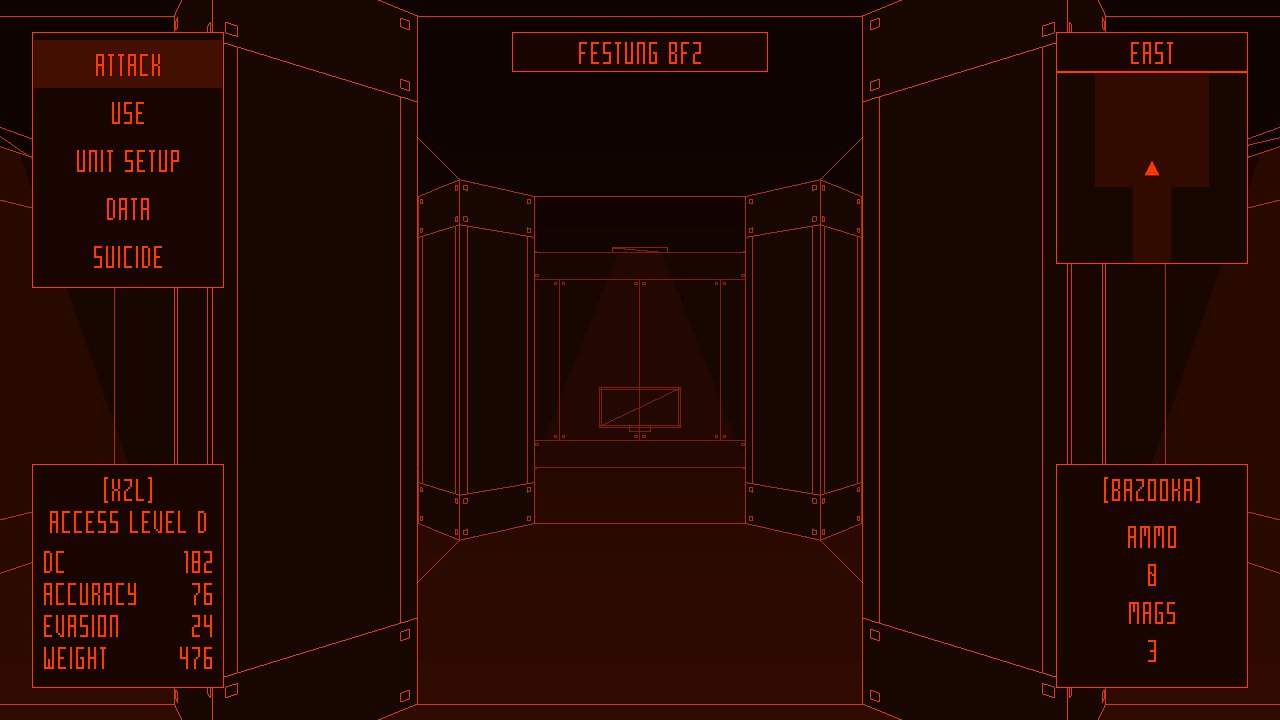Hello again, RS here.
I would like to take a moment to talk about the design decisions made during Das Geisterschiff, and especially talk about how a lot of abstract features from classic design had to be adjusted to work well with this gameplay formula, as well as things that didn't make it into the game, but will most likely find their way into a sequel once I figure out how to adapt them.
Let's start from the very beginning
As you probably know, I love dungeon crawlers, even though I tend to suck at them. I enjoyed bumping into walls in Wizardry and getting lost on the third floor while carefully traversing through hidden passages to avoid spinners and pits, and the thrill of dragging the dead ones back to town while praying that nobody ambushes me on my way gave me goosebumbs that few horror games manage to pull off.
As much as I enjoyed it, I was hoping that someday I'd play a game where the enemy (or enemy party) can be pushed off into one of these pits as a desperate measure to keep your character(s) alive. Therefore I tend to look back at the simplicity Akalabeth offered for one simple reason -- fighting inside the dungeon itself. The closest things I've managed to find to that experience are the mobile games from id and Fountainhead, which are enjoyable despite the simplicity, and Carmine by MicroCabin/Arrowsoft -- even though it's an adventure game with stats and grid-based movement, it gave me a lot of inspiration to work on this game.
There are a lot of realtime first person RPGs that offer fighting inside the dungeon, but unfortunately, realtime RPGs proved to be very unsatisfying to me, as whatever depth they try to add to their combat is thrown out of the window due to the two-step tango nature of it. Among the first person turn-based RPGs I've noticed that too many of them are just Wizardry derivatives -- which is not bad, but sometimes you really start craving for somewhing different, as there is a ton of ideas unexplored within the genre.
But as you may already know, the abstraction Wizardry offers does not always make sense (which works very well for the majority of blobbers and crawlers out there), which makes it somewhat tough to translate some of the features to the in-dungeon combat.
My personal set of design rules
This is a set of rules I laid out to myself which I aimed to follow as close as possible in this game and aim to follow in future games:
- Every action has a certain price;
- The player and enemies follow the same rules and have the same tools;
- The game should be challenging the player until he learns the rules;
- The game should never hold the player's hand.
Some may argue that this is too cruel, while others may love this. This indeed leads the game into the 'either you love it or hate it with a passion' territory, but my ultimate goal is not making billions of dollars -- it's finding and connecting like-minded people who'll enjoy playing my game(s) decades later.
Features in Das Geisterschiff (and where the ideas came from)
WARNING: HUGE SPOILERS AHEAD, TURN BACK
Das Geisterschiff is a rather uncommon game in terms of gameplay, as it took inspiration from a wide variety of games and genres, both 'old' and 'modern'. Let's take a look at some of the notable features that ended up in the game, challenges that arose during the implementation as well as adaptation of some of these features from classic games and where these ideas came from.
- Movement in combat via Advance/Stay/Retreat commands was inspired by Carmine -- it was the answer I was looking for after feeling rather bitter by the inability to move and attack like the enemies do in Doom RPG and similar games from id/Fountainhead;
- Ramming was inspired by various movies and games where big characters break through walls and other objects. It was also inspired by the bitter feeling in videogames when your enemies get to do awesome things and you don't. I think this idea first came up after discussing game design with Damjan Mozetic (main developer of Call of Saregnar, check out his game, it looks great);
- Attacking from higher/lower ground with bonuses/penalties to damage and evasion was somewhat inspired by Starcraft, but later I learned that some tabletop games have this as well. Still, I think this probably makes Das Geisterschiff the first dungeon crawler where the position relative to the target somewhat matters;
- Ram response was inspired by Heroes of Might & Magic 3 -- a game I love and keep playing today after playing it for the first time in 2000. In this case, however, it's triggered if the target evaded the ramming attempt. Initially entities would step away if the ramming attack failed, but then I decided to add the ability to retaliate by ramming back or shoot the attacker;
- Running away from enemies by avoiding their line of sight was kinda inspired by Thief and Deus Ex. The implementation is far from in my game, but it's fair to have this option if one wants to get someone off their tail. The game only requires the player to kill 4 (!) enemies during the whole game -- the rest can be avoided with enough persistence;
- Exploration-based character progression started as a workaround of the large oversight in design -- initially there were no plans for the upgrade system, but then I reckoned the game would become too boring if there was no point to explore the levels. As I'm not a big fan of grinding my way through battles (and battles here were designed as means to challenge the player's ability to manage the resources and outsmart the enemies), I took a lot of inspiration from King's Field and stuffed tiny upgrades in various parts of levels to give the player the incentive to explore and patch themselves up if they hit a tough spot;
- Not giving any information about the enemy during the first few rounds was heavily inspired by Wizardry. Even though the game doesn't have that many enemy types (and thus this feature plays a rather minor role), it helps to create tension during the first few combat rounds;
- Scaring certain enemies with a bazooka came from the memories of playing a bit of I Am Alive a long time ago. I thought this feature will be a funny detail that can make the playthough easier for players who find out how this works;
- Extreme resource management was again inspired by Carmine, although later I decided to add workshops to fix one's armor a bit, otherwise the difficulty would probably make Wizardry IV look like a babby's first RPG in comparison. The main idea was to force the player to LOOK AROUND AND THINK before doing anything. Should I step behind the corner and lure the enemy just a bit closer? Should I switch weapons or keep shooting and hope that one of my shots finally hits the target with high evasion? Should I step closer to get a better chance of landing a shot, but face the consequences if I end up missing it or the target survives my attack? Should I step back to reduce the damage taken from attacks and chances to get hit, but reduce my chances to hit the target? In my opinion, these little nuances offset the general simplicity of the base mechanics -- instead of managing the complexity, you need to get good with what you've got, otherwise you'll end up dying sooner or later;
- Spinners were mostly implemented for the Tunnels area (and a nod to the third floor in Wizardry 1) to give players an extra reason to pay attention to their surroundings, otherwise they would end up wandering around the area for hours straight (even with multiple hints on where they should and shouldn't go). The implementation had several challenges:
- They had to be subtle -- if the player saw their character turning, they'd definitely suspect something is wrong;
- They had to be not too subtle -- that's why there's some static on the screen to give the player a hint that something has happened;
- How would they function in combat -- this question remains unanswered at the moment, but I do have a few ideas for that that I'd like to implement in the sequel. Here it's the main reason why the spinners are located in areas that are pretty far away from the spots where you encounter enemies.
- Teleporters are not very frequent in the game, just like spinners, and they were implemented to give the player a nice shake once in a while. I'm still wondering how to insert them into combat system -- throwing off aim if you step into one of them? Telefragging if there's an entity standing on the destination tile? We can only hope to find out if I make another game like this. There were also quiet teleporters, but these didn't end up in the game -- I just couldn't find a nice place to add them;
- One-way passages were a no-brainer -- just turn them into elevated areas which can be jumped down from. Mostly used for shortcuts in the game (e.g. avoiding some of the sunrays @ Upper Level);
- Traps and environmental hazards are limited to the following types:
- Landmines -- can be disarmed, can be shot, enemies can sometimes end up being forced to step onto them;
- Sunrays -- very rare hazard type, melts the armor. Very dangerous to non-heavy enemies;
- Jammers of several types, such as:
- Dark Zone -- blocks main view, gives penalties to the entities within the range. Autonomous robots (Schess, Ruma, etc) get a slight accuracy penalty, while piloted robots (Eagle, Crow, Eberbach Enforcer...) get a noticeable penalty to both accuracy and evasion;
- Slowdown -- gives a noticeable evasion penalty to both autonomous and piloted robots;
- Disruptor -- kinda funny name, but not very funny results. Blocks the player's ability to move and attack in the same turn, forcing him to use manual shooting. Nasty stuff.
- Scripted events or 'specials' -- people usually hate scripted events for a good reason, but everyone knows that some of these can spice up the game is used correctly. A good example in Das Geisterschiff was heavily inspired after reading about Wizardry VII (to my shame, I'm yet to play this one), which as far as I know had multiple parties competing with the player -- in Das Geisterschiff, though, at one point of the game there's another entity who evades the player during the whole chapter and plants landmines all over the place, sometimes blocking the paths and trying to lure the player towards the encounters;
- Limited saves idea came from Enemy Zero as means to give the player an incentive to live with their mistakes and push forward. The game is rather forgiving in this regard -- you can restart the current dungeon segment if you die or restart the whole chapter if you believe that your savegame is screwed, but the best way to avoid this is analyzing the enemy behavior and current situation and acting accordingly.
Features that didn't end up in the game
Ouch. These features were either half-implemented and abandoned, never left the design document for a variety of reasons or came up long after I locked the design and started making content (and will probably end up in a sequel if I ever get around to making one). Let's take a look at them and their potential usage in the game:
- Thin/glass/breakable walls -- never found a good use to them at that time and they would sometimes cause pathfinding issues. Now I have a good idea for them (hiding useful upgrades and alternative passages through levels), but alas, they never made it here;
- Elevators -- half-implemented into the main game, would serve as means to travel between various sections of the level and quick escapes from combat, but cut after hitting the limitations of the PC I've got (which is a budget laptop from 2010 or so), which forced to design bigger dungeons as smaller segments that end up being seamless multi-floor areas if mapped on graph paper;
- Laser beams -- would cause damage to the player passing through them, but could be reprogrammed to damage enemies instead. Never made it for whatever reason;
- Movable/pullable objects -- pushing a huge object to obstruct a path for the enemy, opening a new path or solving a puzzle this way would be an interesting idea, but these never left the design document in this game, even though I have a prototype of an RPG that uses this mechanic a lot;
- Combat stances -- what the pilot is currently focusing on? Hitting the target, sacrificing some evasion points? Evading the next shot, while sacrificing the accuracy? Or just standing there, maintaining the balance between the two? This idea came up by the end of the development of this game and will definitely end up in a sequel;
- Special abilities -- this came up when I realized that some enemy types need some unique abilities that bend the rules of the game to make them memorable, avoid exploitable tactics and so on. Unfortunately, not giving the player the ability to rush towards the enemy (like Carriers do) or use an AoE attack (Wraith) kinda broke the one of my design rules ('The player and enemies follow the same rules and have the same tools...'), but this would probably end up in the sequel. Abilities can add more to the exploration and combat, and I'd like to find a good way to add them to the future games to make combat more than picking the right position and weapon against the enemy.
Conclusion: dungeon crawlers as a genre have a shitton of unexplored potential and there are many things that can be used to spice up the gameplay and offer something completely different. I'm sure that the examples provided are just the tip of the iceberg and there's more that can be done with the genre, and you don't have to look too far -- just recall the games you liked or features that caught your eye and see how you can adapt these ideas into the genre or crazy stuff that you pulled off during the tabletop sessions.
Have a nice day and enjoy the game!
--RS








